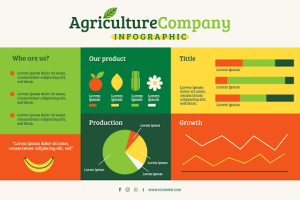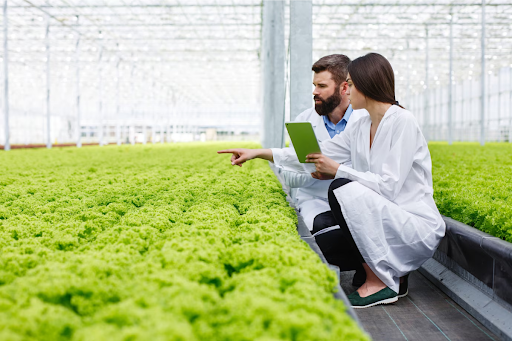Introduction
Understanding numbers in farming is super important. Agriculture teaching statistical distribution relevant for agriculture helps us make smart choices about planting crops, feeding livestock, and using resources like water and soil efficiently. But what does statistical distribution mean? Simply put, it’s a way to look at numbers and patterns to understand data better. Farmers use statistical analysis to predict rainfall, track soil conditions, and estimate crop yields. Teachers make learning fun by using graphs to show how weather impacts crops or how proper fertilizer use can improve harvests.
Learning these concepts in an easy way helps kids connect math to farming and understand how data-driven decisions can lead to sustainable agriculture. By teaching statistical distribution, we prepare young learners to think like scientists, using facts to solve real-world farming problems. This knowledge supports smarter, environmentally friendly farming, which is crucial for our planet’s future.
What Is Statistical Distribution in Agriculture?
Statistical distribution in agriculture is all about understanding numbers and how they’re spread out in a data set. When teaching statistical distribution relevant for agriculture, we explain how farmers use data to make better decisions. For example, if a farmer wants to know how much corn to expect from a field, they can use statistical distribution to predict average yields. It helps them see patterns, like how weather changes affect crop growth or how pests might impact harvests. Teachers use simple examples, like drawing graphs, to show how this data works in real-life farming.
Understanding these concepts is key because it connects math to everyday farming and helps us grow food smarter. With this knowledge, students learn how farmers can use numbers to make sure they plant crops at the right time, use resources wisely, and even protect the environment. It’s all about using data to farm better!
Why Statistical Distribution Matters in Agriculture Education
Statistical distribution is super important in agriculture education because it helps us make smart decisions about farming. Agriculture teaching statistical distribution relevant for agriculture shows how data can solve real problems. For example, farmers need to know the average amount of rain in an area to plan when to plant seeds. By understanding patterns in numbers, students learn how to predict crop yields, figure out the best planting times, and use resources like water and fertilizer wisely.
Teachers use simple examples, like drawing charts, to explain how different factors, like weather and soil quality, impact farming. Learning this way connects math to everyday farming and helps students see how data-driven decisions improve food production. It’s about teaching kids to think like scientists, using numbers to make farming sustainable. This knowledge prepares them to protect the environment and help farmers grow healthy crops efficiently.
Statistical Distribution Models Used in Agriculture

Statistical distribution models are tools that help farmers make smart decisions. Agriculture teaching statistical distribution relevant for agriculture includes explaining models like the normal distribution, binomial distribution, and Poisson distribution. These models show how numbers and patterns work in farming. For instance, the normal distribution helps predict average crop yields by showing how most harvests fall around an average amount.
The binomial distribution is used to predict outcomes like the success or failure of seeds sprouting, while the Poisson distribution can help estimate how often events like pest infestations happen. Teachers use simple examples to explain these models, making it easy for students to understand how data impacts farming decisions. Learning about these models helps kids see how farmers use math to grow food efficiently and manage risks, connecting science and math to real-life agriculture.
Teaching Methods for Statistical Distribution in Agriculture
Teaching statistical distribution in agriculture can be made fun and easy for students. Agriculture teaching statistical distribution relevant for agriculture uses hands-on activities and real-life examples to explain concepts. Teachers might use simple graphs and charts to show how weather patterns affect crops or how different soil types influence plant growth. Interactive lessons, like growing small plants in different conditions, help kids see how data can predict outcomes.
Digital tools, like farming simulation games, make learning even more engaging by showing how statistics work in agriculture. Group activities, where students collect and analyze data from a school garden, make math and science exciting and practical. These methods connect numbers to real-world farming, making lessons relatable. By teaching statistical distribution in a fun way, resources efficiently, helping to grow food sustainably.
Practical Applications of Statistical Distribution in Agriculture

Statistical distribution is used in agriculture to help farmers make smart decisions. For example, it helps predict how much water crops need or when to plant seeds for the best harvest. By looking at data patterns, farmers can understand things like soil health and weather changes. This way, they know how to use fertilizers wisely and avoid wasting resources.
Statistics also help in planning how to control pests and diseases by showing how often problems might occur. Teachers explain these concepts using simple examples so students can see how math is important for growing food. By learning about these practical uses, kids understand how data helps make farming better and more sustainable.
FAQ’s
Q: What is statistical distribution in agriculture?
A: It’s a way to understand data patterns that help farmers make decisions, like predicting crop yields or managing water use.
Q: Why is learning statistical distribution important for students?
A: It teaches kids how math and data connect to real farming, making it easier to solve agricultural problems smartly and sustainably.
Q: How do teachers make statistical distribution fun for students?
A: Teachers use graphs, hands-on activities, and games to show how statistics impact farming, making lessons engaging and easy to understand.
Q: What are some real-world uses of statistical distribution in farming?
A: Farmers use it to predict rainfall, track soil health, plan planting times, and manage pests to improve crop growth.
Conclusion
In conclusion, agriculture teaching statistical distribution relevant for agriculture is essential for helping students understand how data drives smart farming decisions. By learning how to read patterns and use statistics, students can see how math is connected to real-life farming challenges, like predicting crop yields, managing water use, or controlling pests. Teachers use simple and fun examples to make these concepts easy to grasp, like drawing graphs or doing hands-on activities in a school garden.
This knowledge is not just about numbers—it’s about learning how to grow food in a smarter, more efficient way that helps protect our environment. Understanding statistical distribution prepares young learners to think like scientists, using facts and data to make the world a better place. By teaching these skills, we are preparing future generations to support sustainable farming and help make sure everyone has enough food to eat.

